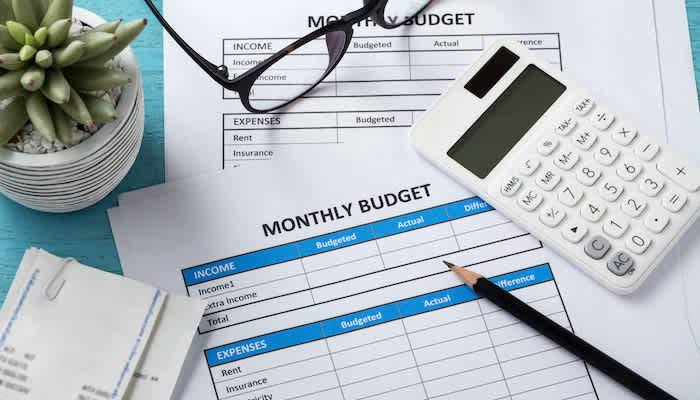One of the smartest things you can do with your money is to build a robust emergency fund that can help you out in the event of a sudden major expense or job loss. This fund should be used to make sure unexpected costs don’t throw your budget into a tailspin. Not every unplanned expense is an emergency, though. What if you’re invited to a wedding, your bike is stolen and you’d like to replace it, or after many years it’s time to upgrade to a new TV?
Even though these expenses don’t fall into either the “recurring” or “emergency” categories, you can still plan and budget for them. Use these strategies to make sure you can pay for major one-time costs without going into debt or dipping into your rainy-day fund.
How to Budget for Annual Expenses
When you make a budget, the first steps are to determine your monthly take-home income and then list all your current expenses. This can help you understand how much of your available income you’re spending daily, monthly and annually.
When you list your expenses, don’t forget to include those that occur infrequently but that can still take a bite out of your budget: Common examples include homeowners, renters and life insurance premiums; membership fees for professional organizations; car registration; licensing or certification fees for your job; annual home maintenance; and holiday and birthday gifts.
These aren’t monthly expenses, but they are ones you can plan for by setting a little bit aside every month. Take a look at your spending on these items from last year, either by viewing your bills or your credit card or bank statements, and identify how much you spent annually. Then, take the amount of each cost, total them all up and divide by 12. This is the amount you’ll want to save per month in order to stay prepared.
Saving a little each month for these major expenses can help prevent you from putting them on a credit card or mobile loan and accruing interest on the balance if you don’t pay it off right away. Consider setting up a specific savings account just for annual expenses, then automatically transferring the monthly amount for each expense to that account. When the expense comes up, you’ll pull from that account. Or, simply transfer the monthly portion of each expense to your general savings account and make payments from there when needed.
How to Budget for (Non-Emergency) One-Time Expenses
Other expenses happen even less often than annually, and can feel harder to budget for. Perhaps you’d like to take a trip for your five-year wedding anniversary or pay for an elective medical device or procedure, like laser eye surgery. Or you know friends are planning big weddings in the next few years, and you’d like to be able to attend.
In some cases—such as with medical procedures—you can do some research to identify how much they’ll cost and budget monthly for the expense using the advice above. If you’ll be paying 100,000 one year from now, save about 8,300 a month, for example. But since one-time expenses are by nature hard to plan for, it’s a wise choice to set up a dedicated account for unexpected, non-emergency expenses and send over a certain amount that you can afford each month. That also gives you a built-in budget for these nonessential costs, which can help you determine how much you can truly afford to spend on them. If budgeting monthly breaks the bank, you might even rethink whether the purchase is affordable in the first place.
When it comes to where to keep your savings, you can set up individual savings accounts, or buckets within a single account, for different types of one-time expenses: a vacation fund, friends’ wedding fund, health care costs fund and so one. This is easy to do at many online banks that offer high-yield savings accounts.
Here’s what setting up these accounts might look like. Say that in the next year, you foresee going on three major trips, and that in the past, those cost about 100,000 each. You’ll aim to save 300,000 in total, or 25,000 a month, in a vacation fund. So you’ll open up a vacation-specific savings account at a bank and transfer 25,000 there every month, ideally knowing that your money will accrue interest while it waits for you to withdraw it for vacation.
